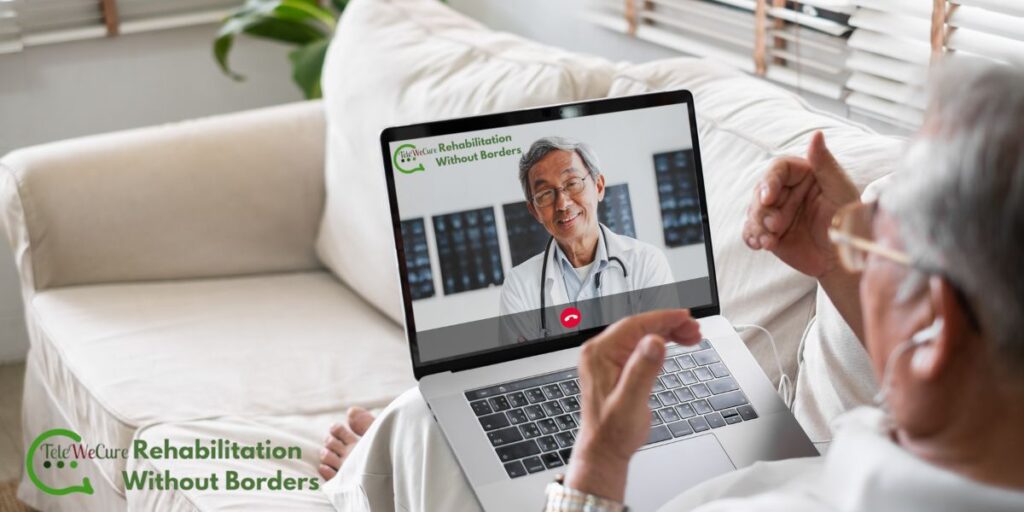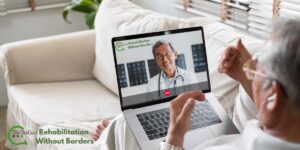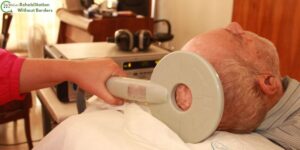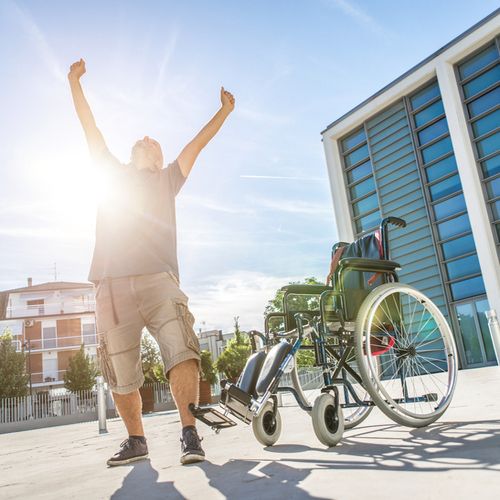Scientific Evidence Supporting the Efficacy of Telerehabilitation
The Paradigm Shift: Why Your Couch Is the New Clinic
For decades, the standard path to recovery from physical disability, involved a ritualistic commute to a physical clinic. While effective, this model often came with hidden costs: lost work hours, transportation expenses, and the sheer fatigue of moving a painful body through city traffic. Let’s face it, no one wants to add the stress of a rush-hour commute to an already aching back.
Enter telerehabilitation: the revolutionary application of information and communication technologies (ICT) to deliver rehabilitation services remotely. It’s not just video calling; it’s a sophisticated, secure ecosystem that includes synchronous (live video) sessions, asynchronous (store-and-forward) data reviews, remote monitoring, and interactive patient-facing applications.
The core role of telerehabilitation is to democratize access to expert care. By eliminating geographical barriers and logistical hurdles, it ensures that high-quality, specialized recovery programs—be it for a knee replacement or stroke recovery—are available to everyone, everywhere. It empowers you to integrate therapy seamlessly into your life, rather than scheduling your life around therapy. This transformation is rooted not in convenience, but in a rapidly growing, solid body of scientific proof.
Orthopedic Rehabilitation: The Knee-Jerk Reaction to Success
The most robust body of evidence for telerehabilitation lies in the orthopedic field, particularly concerning postoperative care. When it comes to surgical recovery, consistency and adherence are everything.
Randomized Controlled Trials (RCTs) Speak Loudly
Multiple gold-standard Randomized Controlled Trials (RCTs)—where patients are randomly assigned to either in-clinic or telerehabilitation groups—have consistently demonstrated non-inferiority (meaning, it’s just as good) of remote care compared with in-person care.
- Total Knee and Hip Arthroplasty (TKA/THA): A pivotal study published in the Journal of Bone and Joint Surgery found that patients recovering from joint replacement surgery via telerehabilitation achieved equivalent, and sometimes superior, gains in mobility, pain reduction, and functional status compared to the in-clinic group. The remote group also reported significantly higher patient satisfaction and required fewer total appointments, saving time and money.
- Shoulder and Back Pain: Systematic reviews across various musculoskeletal conditions, including chronic low back pain and rotator cuff repair, show that remote delivery of guided exercises and education yields comparable improvements in pain intensity and disability scores. Experts suggest this is because the essential components of physical therapy—patient education and adherence to a tailored exercise plan—are effectively delivered and monitored remotely.
The Scientific Takeaway: The data decisively confirms that for most routine orthopedic recoveries, traveling to a clinic is an optional expenditure of time, not a clinical necessity. Your physical therapist just needs to see your form; they don’t need to see your parking validated.
Cardiac and Pulmonary Recovery: Keeping the Beat Strong
Recovery after a major cardiac event or managing chronic respiratory illness requires consistent, long-term monitoring and adherence to a strict exercise regimen. Here, telerehabilitation shines by providing safety and accountability outside the hospital walls.
Safety, Effectiveness, and Reach
- Cardiac Rehabilitation: Large-scale studies and meta-analyses, often covered in journals like the Journal of the American College of Cardiology, have established that home-based, monitored cardiac telerehabilitation is as safe and effective as facility-based programs. Patients who participate remotely show equivalent gains in exercise capacity, and crucially, programs utilizing remote monitoring have shown high compliance rates, directly translating to better long-term outcomes and reduced rates of re-hospitalization.
- Chronic Obstructive Pulmonary Disease (COPD): For patients with chronic lung conditions, pulmonary telerehabilitation, which includes remote monitoring of oxygen saturation and guided breathing exercises, has been proven to improve exercise tolerance and overall quality of life. The remote model is a lifeline for individuals whose mobility limitations make regular clinic visits impractical or dangerous.
The Scientific Takeaway: Remote monitoring capabilities turn your home into a safe, real-time data collection hub. When it comes to your heart and lungs, having an expert watching your numbers from afar can be safer than struggling through a long commute.
Neurological and Complex Conditions: Closing the Gaps
Telerehabilitation is increasingly vital for chronic and complex neurological conditions, where access to specialized care is often scarce outside major metropolitan centers.
- Stroke Rehabilitation: A review of evidence published in Cochrane (a leading global resource for systematic reviews) indicated that technology-assisted, home-based therapy for the upper limbs following a stroke resulted in clinically significant improvements in motor function. The repetitive, intensive practice crucial for neuroplasticity is often more sustainable in the home environment, often using low-cost technology like gaming systems or specialized apps under therapist guidance.
- Parkinson’s Disease and Multiple Sclerosis (MS): For managing the progressive symptoms of movement disorders, telerehabilitation provides crucial, continuous access to physical and occupational therapists. Remote consultations are proven to maintain function, improve gait speed, and manage fatigue—all without the exhausting process of traveling when symptoms are severe.
The Scientific Takeaway: By providing intensive, repeated, and personalized intervention precisely where the patient lives, telerehabilitation optimizes the principles of neuroplasticity, driving functional recovery with logistical efficiency.
The Economic and Human Advantages
Beyond clinical effectiveness, the evidence is overwhelming on the pragmatic benefits of remote care:
Cost-Effectiveness
Multiple health economic analyses have shown that telerehabilitation is significantly more cost-effective than traditional care. Studies show that patients often complete their programs using fewer resources (less staff time per session, no facility overhead) while maintaining equivalent results. This efficiency translates to lower costs for the patient, the insurer, and the healthcare system.
Patient-Centered Care and Adherence
Research consistently highlights that patient satisfaction and treatment adherence are higher with remote programs. When therapy is easy to access, patients are more likely to stick with it. Furthermore, therapy conducted in the patient’s home provides the therapist with a unique, real-world view of environmental barriers (e.g., stairs, bathroom access) that can’t be replicated in a clinic, allowing for highly relevant, patient-centered goals.
TeleWeCure: Your Partner in Evidence-Based Telerehabilitation
The proven efficacy of telerehabilitation is only as good as the platform used to deliver it. This is where TeleWeCure steps in.
As a pioneer platform, TeleWeCure is designed specifically to translate these scientific findings into real-world recovery. We focus on integrating the necessary elements of evidence-based remote care:
- High-Definition Live Sessions: Ensuring your therapist can accurately assess your form and technique.
- Remote Therapeutic Monitoring (RTM): Using integrated tools to track your performance, compliance, and metrics between sessions, providing your licensed practitioner with objective data that drives clinical decision-making.
- HIPAA and PHIPA Compliant Security: Guaranteeing that the rigorous data security requirements proven necessary by scientific research are met, protecting your sensitive health information at all times.
We believe that the future of rehabilitation is about maximizing outcomes with minimum disruption to your life. Choosing TeleWeCure means choosing a partner committed to evidence, efficacy, and the convenience that modern science affords. After all, if the science says you can heal just as well in your pajamas, why wouldn’t you?





